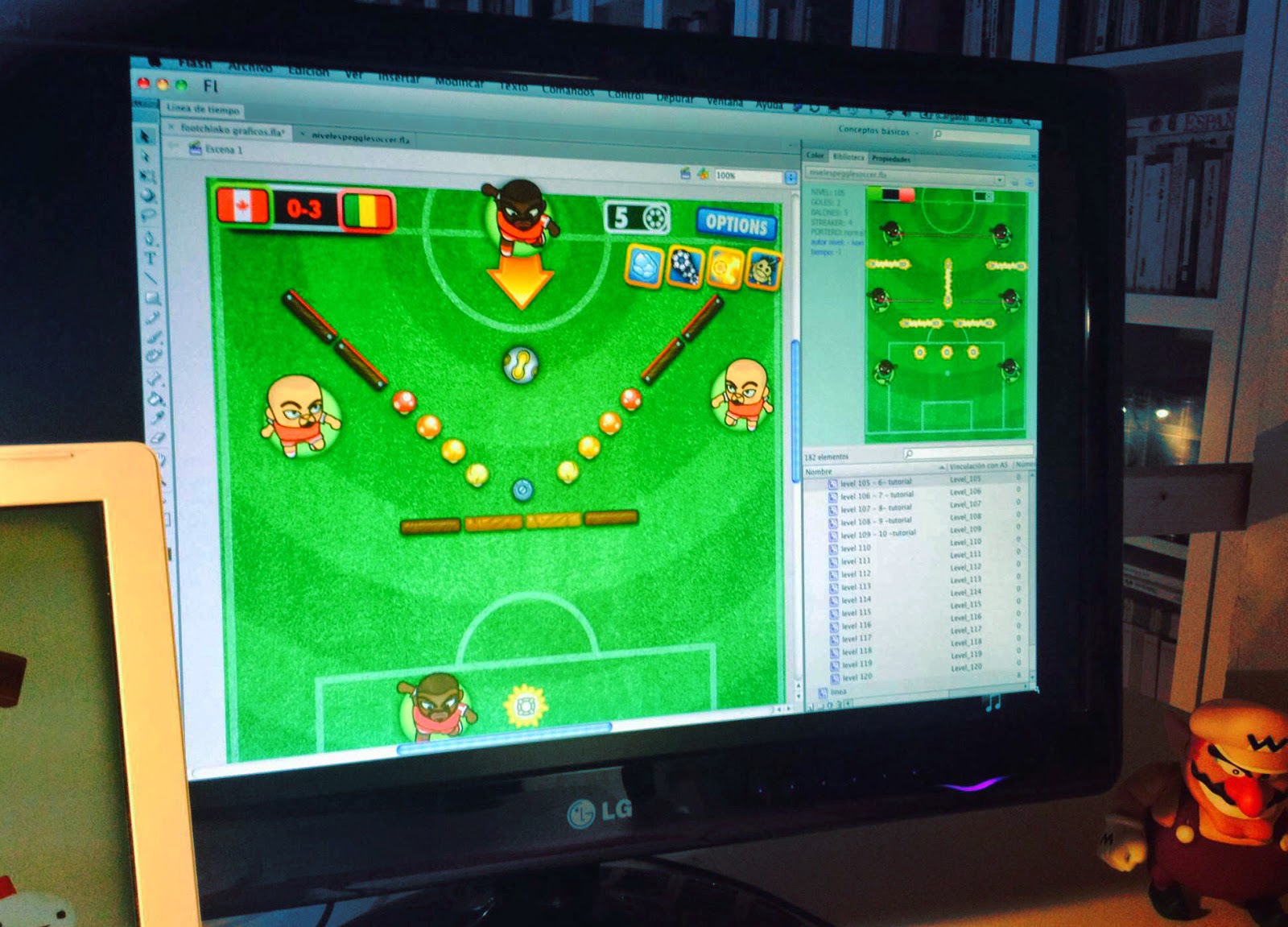Theme and atmosphere in Algerian Solitaire
Today we would like to introduce you to our latest licensable HTML5 game, Algerian Solitaire. This exotic card game takes us to the dreamlike setting of the Sahara desert. It will also help us as an excuse to cover the interesting topic of the theme in solitaire games.
Foot Chinko: level design and game flow
Foot Chinko, our casual approach to football (soccer) games, has the biggest amount of levels ever seen on a Ravalmatic game (+90 levels). Editing them was a major effort per se, but then, arranging them properly wasn’t either a simple task. Without no particular literature about this specific stuff, here’s how we figured we could handle the task.
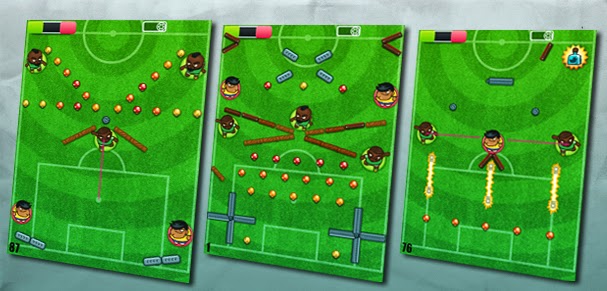
When you do level design it is key to have a tool that is visual and fast to use. The agility you have when building and testing the levels is very important to produce good stuff. If the task is a heavy and time consuming burden, the levels will consequently be designed in less iterations. That’s what happened in previous games of the studio resulting in more plain level design or an exaggerated amount of time invested on the task.
Enriqueto, had already used the Flash IDE as a visual level design layout that could be later parsed into data about items, their location and contextual level data (seconds, type of goalkeeper, etc.). Testing those levels was as easy as exporting the Shockwave file, running a json exporter, and testing the game on the browser.
Ivan then edited a huge amount of levels in several iterations, discarding some of them due to technical limitations, and getting the most out of sketched ideas and emerging game mechanics. Some of Foot Chinko’s levels felt more skill-demanding and some other had a more random development, but the general idea was to keep a wide variety of levels, offering contrasted flavors. While a random level could be more appealing for a casual player, as the game progressed, those levels should be gradually replaced by more technical ones. If the resolution of an advanced match was just in the hands of luck, the more experienced players could get frustrated. Speaking about Foot Chinko‘s difficulty, it’s really hard to keep objectivity, since your skills will probably be above the average user, so try to make some early testing during this stage of the level design process.
Finally, we printed cards of every single level we had. That helped us to have an overall look, and making groups of levels (passive/interactive, slow/dynamic, easy/hard) and then arranging them alternatively, considering the general difficulty progression during the whole game and the partial difficulty progression of each tournament. Placing the cards on sticky panels was really useful to identify visual patterns and also make agile tweaks. The final step is testing that level progression with players. With the help of metrics we’ll be able to notice if there are some particular tough levels that break the natural progression of the game.
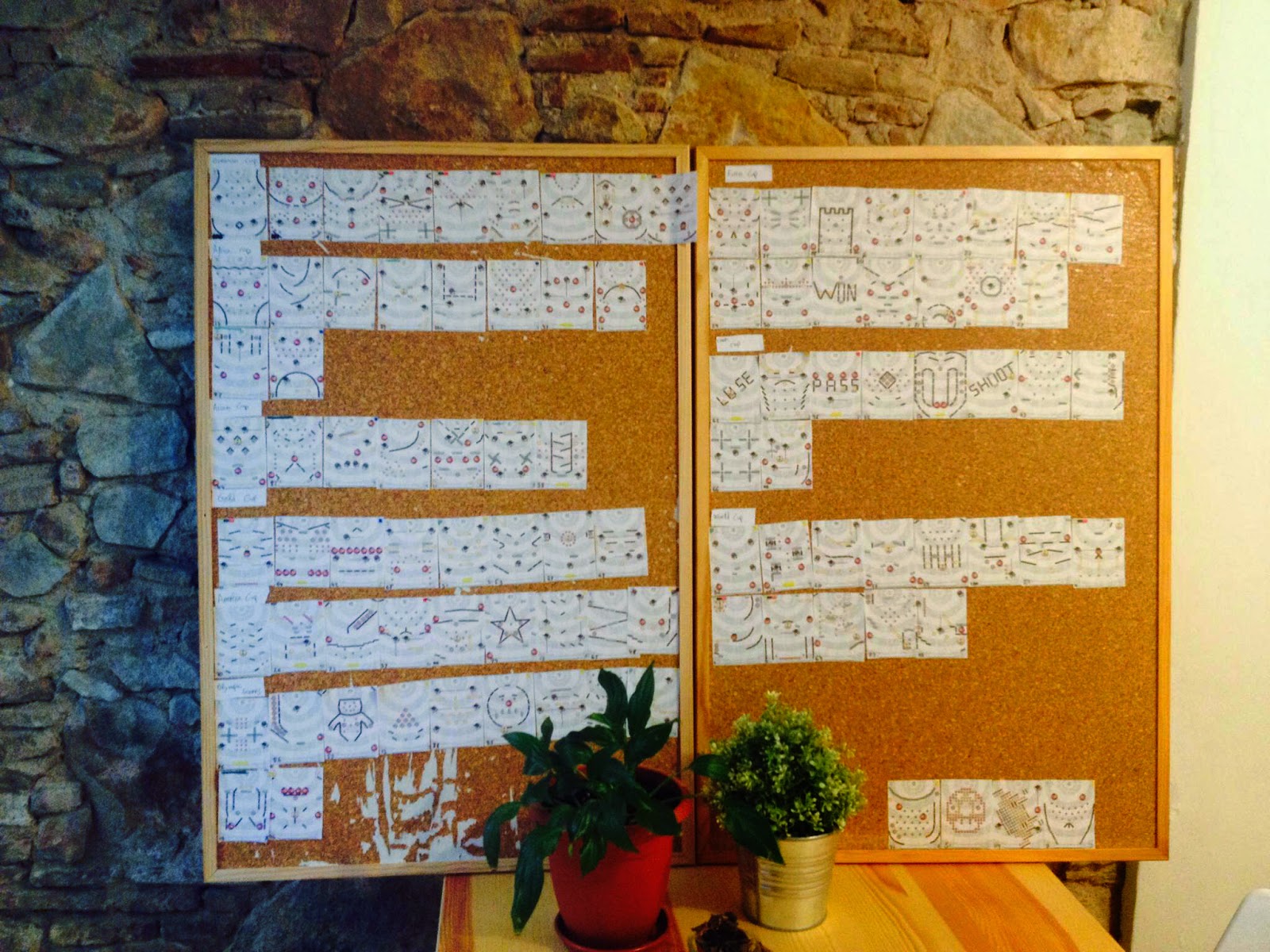 (The plants had strong arguments about the game flow, but the plastic one showed a deeper analytic vision)
(The plants had strong arguments about the game flow, but the plastic one showed a deeper analytic vision) There are probably better ways to deal with level designing and arranging, so we would be glad to hear your suggestions. Take care!
Stories can also be told by level menus
We develop casual games, which in narrative terms means that, generally, stories tend to be overlooked in our field:
- Some odd pigs stole your eggs and you immolate your people (birds) to erase their kind.
- Someone leaves a hungry critter at your doorstep and you feed it a la “Home Alone”.
- You use a machine-gun as a jetpack to burst into a factory and gather some cash that would allow you to get a green mohawk haircut (??).
The list could go on and on, and the quality of stories would diminish until we got to: “a sugar-dealer majordomo invites you to move candies around”.
Before going any further we must say that despite their minimalist stories, these four games rely on a solid gameplay that’s been proven highly motivating for millions of players.
Although we may not be great story tellers, and we definitely have replicated some naive approaches to casual games, we certainly care about making casual games move forward…
In the pathway we have figured out that we can tell amusing stories using not just the intros of the game. In this case, we’ll talk briefly about the narrative possibilities of level menus.
Once again, the previously mentioned games have no significant stories, so there’s no way that their level menus can build up something that is missing from the beginning.
Three classical models of casual games level menus: slots with numbers, In-App-Purchases focused screen, and pointless map. (While you can talk about a journey using a map, in most games it’s just an excuse to give a sense of progression and use different background settings in the game. In the best of cases, every new area will unlock new game mechanics vaguely related to its emplacement, but still though there’s no underlying story about a travel.)
Here there are some story-aimed level menus we used in the past.
Meet Barcenas, the treasurer of a major spanish political party. In the game Chorizos de España, this merry fellow has gathered tons of black money and needs to carry them to Switzerland, the nation where blood-stained money sleeps tight. Traveling by plane is not safe for his purpose, so you have to drive all your way through.
The narrative resource of the journey fits perfectly here. The real character made these very same travel to carry loads of 500-euro bills to Lombard Odier’s offices in Geneva. So if point A and point B are relevant to the development of your story, and there’s a story about a journey to be told… don’t fear the stiff and overused maps: they are your answer, master Frodo!
Do you remember The Death appearing on “The seventh seal” challenging the knight to a chess match? … no? Well… remember the scene of Death playing Battleship in Bill & Ted’s bogus journey? Well… anyway… Death knocks on your door, and before you can even challenge her to a game in exchange for your soul, she proposes a basketball match, just for fun, with her and her three friends: Famine, War and Pestilence.
It may not be quite elaborated, but in Apocalypse Baskeball’s story the individual appeal of the characters is quite relevant. Instead of presenting 4 different game modes, we emplace the player against 4 challenges, 4 cocky demi-gods that make fun of you from the very beginning.
All in all, it’s pretty simple. No deep diving into ellaborated plots or metaphorical stuff, and still, with little effort there’s enough space to reinforce the theme of your game via the level menus. We just sneaked into the possibilities (we are certainly no masters at it), but there are so many opportunities for you to build part of your story using this screen. So when you discover yourself planning a 3-starred-slot levels matrix, or a map to nowhere, just take a couple of minutes to see if you are loosing a narrative opportunity there.
Game analytics
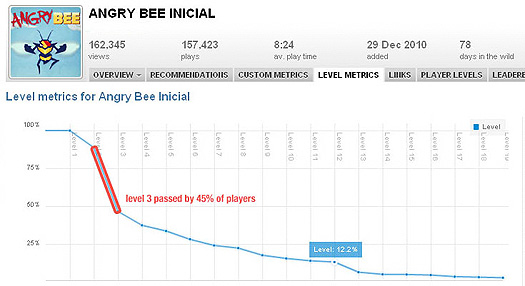
That wasn’t good. The game was more or less finished and at that point we wanted to avoid redesigning the levels. Nothing was wrong with them. The key issue was to improve the tutorial and reorder the levels. Firstly, we tried something simple.
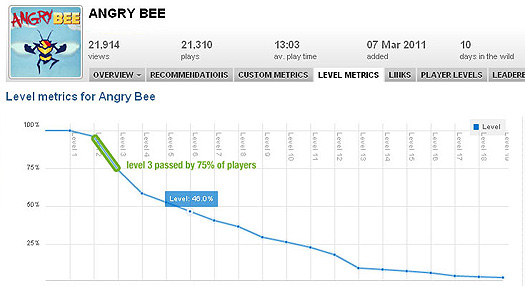
Bingo! Now the game retained 75% of the players and the play time increased.

